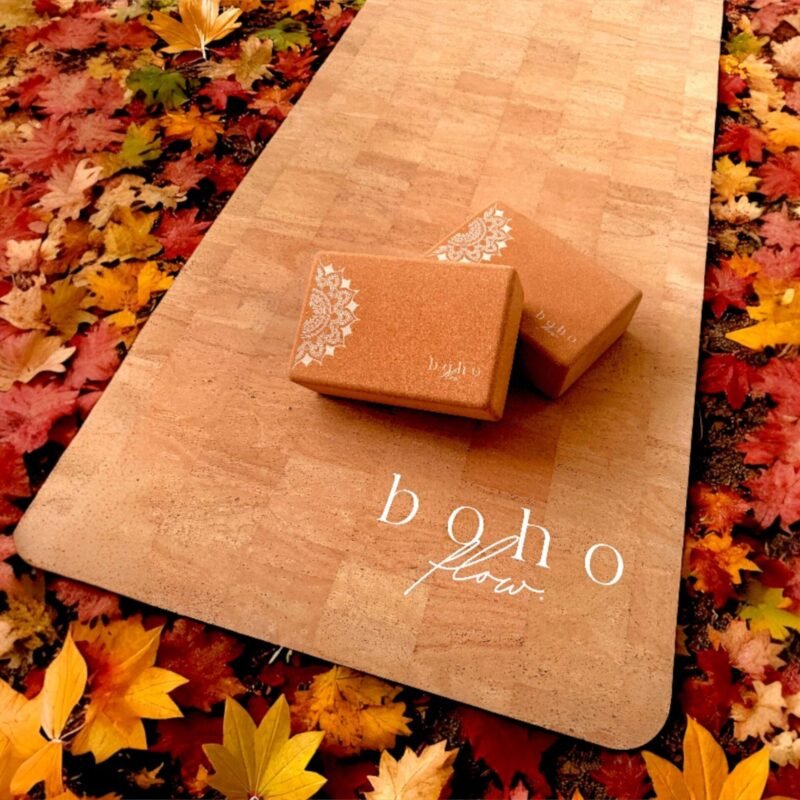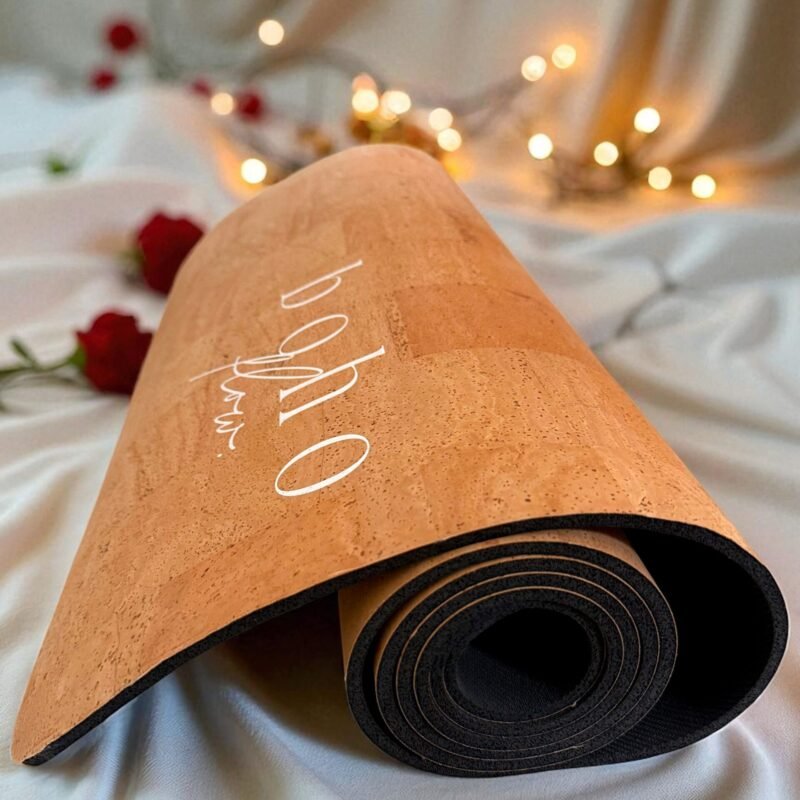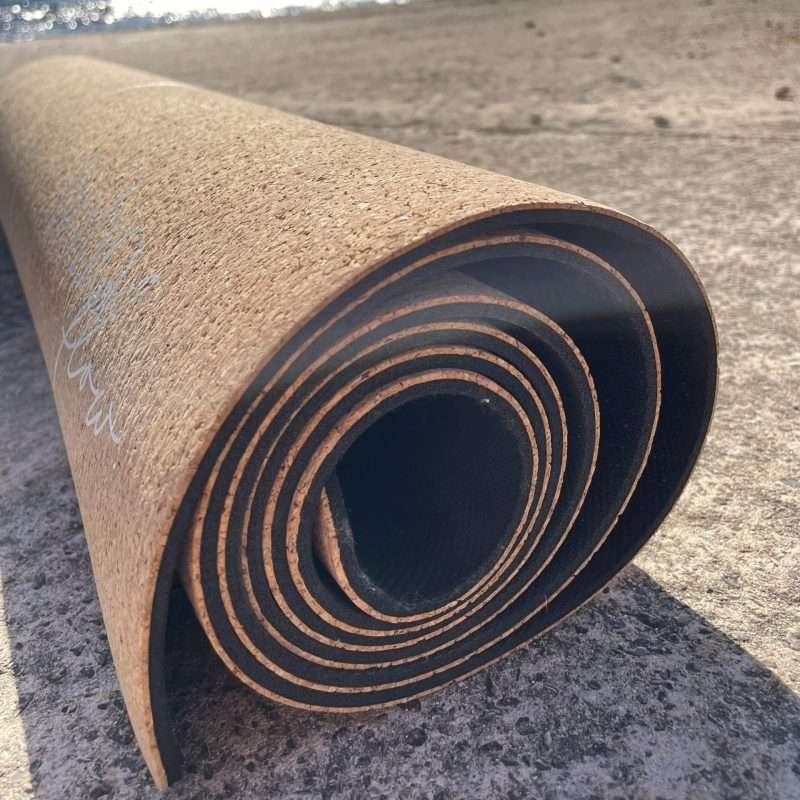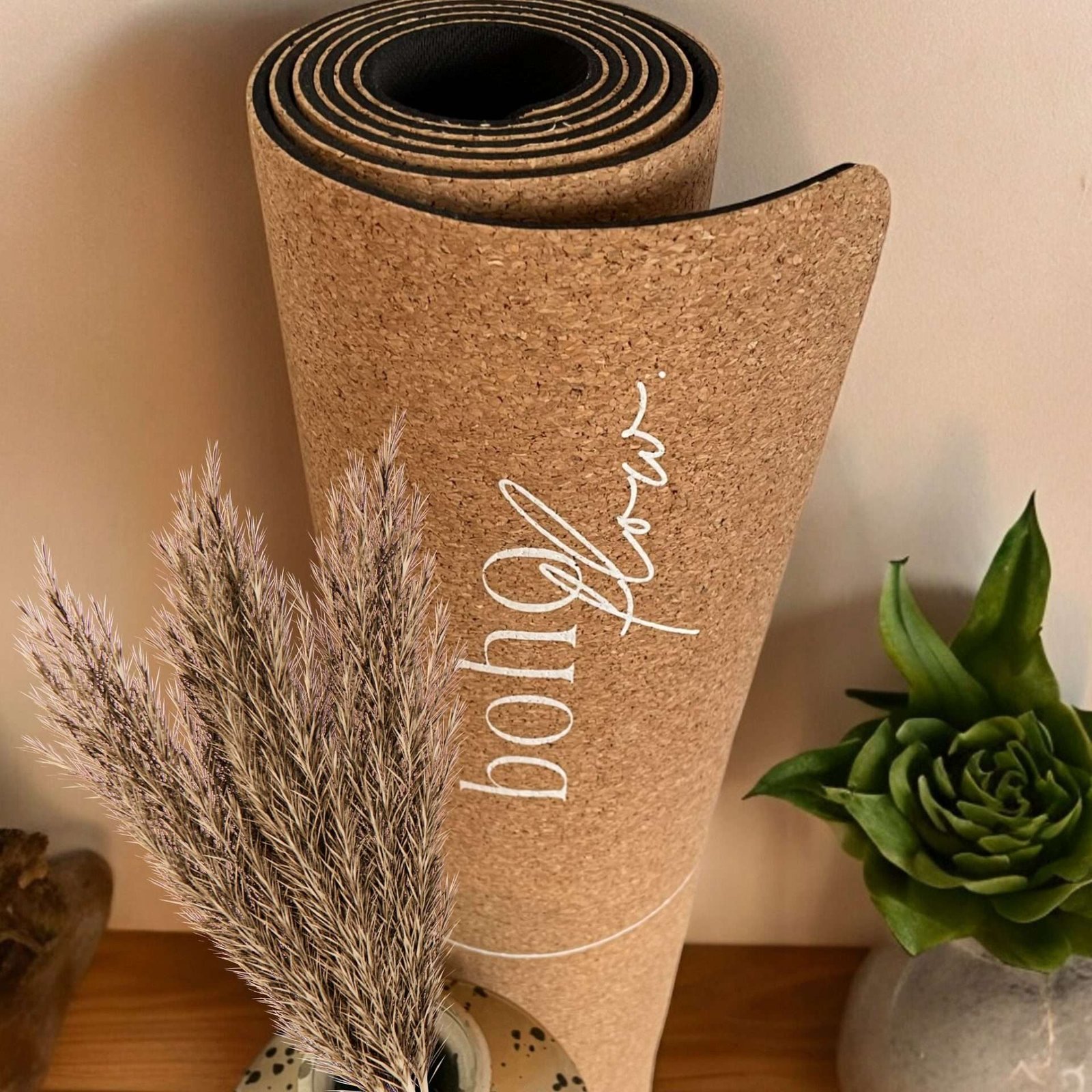10 Tips for a Sustainable Yoga Lifestyle On and Off the Mat

Lokah Samastah Sukhino Bhavantu
लोका: समस्ता: सुखिनो भवन्तु
A yoga lifestyle, at its core, is about creating harmony—within ourselves, with others, and with the world around us: Lokah Samastah Sukhino Bhavantu
In recent years, there has been a growing awareness of the importance of sustainability within the yoga community. As eco-friendly yogis, we recognize the interconnectedness of all things, and that our practice extends beyond the mat to the choices we make in our daily lives. In this blog, we’ll explore how you can make more sustainable choices in your yoga lifestyle on and off the mat.
1. Eco-Friendly Yoga Mats
Start with the foundation of your practice – your yoga mat. Choose mats made from sustainable materials like natural rubber, cork, jute, or recycled materials. Look for brands that use eco-friendly manufacturing processes and avoid harmful chemicals. When it’s time to replace your mat, consider recycling it rather than sending it to a landfill. Eco-friendly, natural yoga mats are usually biodegradable.
All Boho Flow yoga mats are:
🌼 Made from FSC-certified Portuguese cork and natural rubber backing
🌼 100% natural and non-toxic
🌼 100% plastic free – even the packaging
🌼 Sweat proof, odor free and antimicrobial
🌼 Boho chic with elegant and thoughtful designs
Grab your new favorite yoga mat here.

2. Sustainable Yoga Props
Yoga props, including blocks, straps, and bolsters, are indispensable tools that can enhance your yoga practice by providing support and aiding in achieving proper alignment. Fortunately, many of these props are already crafted from natural and eco-friendly materials, but it’s still crucial to make conscious choices when acquiring them. Just as with mats, select yoga props made from eco-friendly materials. For your yoga lifestyle on the mat, consider using props made from recycled or natural materials rather than plastic or synthetic options.

Some good options include:
- Cork Blocks: Cork is a very sustainable and eco-friendly material that is also biodegradable. Harvested cork trees actually use more CO2 than non-harvested cork trees, making cork a great choice for any yoga props or accessories.
- Natural Fiber Straps: Choose a yoga strap that is made or organic cotton or hemp, which are both very eco-friendly and biodegradable materials.
- Bolsters: These can be found in organic versions made from organic cotton or other eco-friendly materials. They are often filled with natural materials like buckwheat hulls or organic cotton, providing both comfort and sustainability.
- The choices you make when selecting yoga props reflect your commitment to yoga’s holistic principles, which extend beyond the mat to the well-being of the planet.
3. Conscious Clothing Choices
Yoga apparel is an area where sustainable choices can make a significant impact. Opt for clothing made from organic, sustainable materials, and support brands committed to ethical and eco-conscious manufacturing practices.
There are numerous brands that focus on sustainable and eco-conscious yoga apparel. Here are a few examples to get you started:
- prAna: prAna is well-known for its commitment to sustainability. They use organic cotton, recycled materials, and Fair Trade practices in their clothing production.
- Teeki: Teeki is known for its stylish and sustainable yoga leggings. Their products are made from recycled plastic bottles and feature vibrant, nature-inspired prints.
- Threads 4 Thought: This brand offers a variety of sustainable activewear, including yoga clothing. They use eco-friendly materials like organic cotton, recycled polyester, and Lenzing Modal.
- Beyond Yoga: Beyond Yoga is dedicated to creating high-quality yoga apparel while focusing on sustainability and ethical practices. They use eco-friendly fabrics and prioritize manufacturing in the USA.
- Tentree: Although they specialize in outdoor wear, Tentree’s sustainable and eco-friendly approach extends to activewear that can be suitable for yoga. They are known for planting ten trees for every item purchased.
- Onzie: Onzie is recognized for its stylish and functional yoga clothing made from eco-friendly materials. They also use a water-conscious dye process.
- Alo Yoga: Alo Yoga combines fashion-forward designs with sustainability. They use eco-conscious materials and have a commitment to ethical manufacturing.
- Boody: Boody focuses on creating activewear from bamboo viscose, an eco-friendly and sustainable material. Their clothing is soft, breathable, and suitable for yoga.
4. Reduce Plastic Usage
Let’s take our yoga lifestyle off the mat somewhat, by ditching single-use plastic water bottles and investing instead in reusable water bottles. Consider a stainless steel or glass option for both your daily life and your yoga practice. Many yoga studios offer water refill stations to help you stay hydrated.
For your home, we suggest a water filter jug to filter your tap water. That way, it is not necessary to purchase bottled water. If you like it sparkly, you can also get water carbonators in many places these days. If you do decide to buy bottled water, we suggest getting glass bottles and recycling these consciously.
5. Choose Eco-Friendly Cleaners

When cleaning your yoga mat, use eco-friendly cleaners or make your own with natural ingredients like water, vinegar, and essential oils. Avoid harsh chemicals that can harm both your mat and the environment.
Of course, you can invest into ready-made mat cleaners. Most bigger yoga brands will offer these. However, it is fairly simple and straight forward to make your own, too!
All You Need Is:
- Water: You’ll need clean, filtered water as the base of your cleaner.
- White Vinegar: White vinegar is a natural disinfectant and helps to remove odors.
- Essential Oils: Choose your favorite essential oils for a pleasant scent and added benefits. Lavender, tea tree, eucalyptus, and lemon are popular choices. Essential oils also have antibacterial properties.
Instructions:
- Gather Your Supplies: Find a clean spray bottle to store your mat cleaner. Ensure it’s free from any residue or chemicals.
- Measure Ingredients: In your spray bottle, combine one part water and one part white vinegar. For example, if you use one cup of water, add one cup of white vinegar. This solution effectively cleans and disinfects your mat.
- Add Essential Oils: Customize your mat cleaner by adding essential oils. You can start with 10-20 drops of your chosen essential oil(s) for a pleasant scent and additional antibacterial properties. Adjust the number of drops based on your preference for fragrance strength.
- Shake and Spray: Secure the spray bottle cap and give it a good shake to mix the ingredients. Your DIY yoga mat cleaner is ready for use.
- Spray and Wipe: Before each yoga session, give your mat a few spritzes of your natural cleaner. Let it sit for a moment, and then use a clean, damp cloth or sponge to wipe the mat. This will help remove dirt, sweat, and any odors, leaving your mat fresh and clean.
- Air Dry: Allow your yoga mat to air dry completely before rolling it up or storing it.
Your DIY natural yoga mat cleaner is not only cost-effective but also safe for you and the environment.
Be aware of what type of yoga mat you use! Mats with a natural rubber surface are usually fine to be sprayed with mat cleaners. However, if you’re using jute or cork, it could damage the surface or affect the functionality. We suggest double-checking before using mat cleaners on these surfaces.
6. Mindful Consumption
Before purchasing new yoga gear or clothing, ask yourself if it’s truly necessary. Avoid excessive consumerism by buying mindfully and supporting brands that prioritize sustainability.
7. Reduce Energy Consumption
Conserve energy in your home by turning off lights, appliances, and electronics when not in use. If you use extension cords, for example, for a number of appliances, you can easily turn off the main switch on the extension cord. Consider using energy-efficient LED bulbs in your lamps, or setting a mood lighting for your yoga practice with natural light and candles.
You can also reduce your energy consumption by pre-heating the oven only as much as is really necessary, or by boiling the kettle only once for your tea and keeping it hot in a tea pot. Smalls steps can add up and go a long way.
8. Commute Consciously
Reduce your carbon footprint by carpooling, biking, walking, or taking public transportation to your yoga class. Of course, if you decide to do yoga classes online, this absolutely minimizes your carbon footprint.
9. Sustainable Nutrition
Nutrition is another truly important aspect of our off the mat yoga lifestyle. The diet we choose has a direct impact on our body, the planet, and animals. Opt for locally sourced, organic, and plant-based foods when possible. Reducing meat consumption can significantly lower your carbon footprint, contribute to your overall health, and means you are living Ahimsa – non-harm toward otthers.
Here are a few important benefits of opting for a plant-based diet that is kind to you, our planet, and the animals:

- Lower Carbon Footprint: Plant-based diets have a significantly lower carbon footprint than diets rich in animal products. Producing plant-based foods generally requires fewer resources and generates fewer greenhouse gas emissions.
- Improved Health: Plant-based diets have been associated with numerous health benefits, including reduced risk of chronic diseases like heart disease, diabetes, and certain cancers. They tend to be lower in saturated fat and cholesterol and higher in fiber and essential nutrients.
- Enhanced Digestion: Plant-based diets are typically high in dietary fiber, which aids in digestion and can help prevent digestive disorders.
- Weight Management: A plant-based diet is often associated with healthy weight management due to its lower calorie density and higher fiber content, making you feel full and satisfied.
- Ethical Considerations & Ahimsa: Many people choose plant-based diets for ethical reasons, as they often involve less harm to animals and less support for factory farming practices.
- Reduced Water Usage: The production of animal-based foods often requires significantly more water than plant-based foods. By consuming fewer animal products, you can contribute to water conservation efforts.
- Support for Biodiversity: Plant-based diets put less pressure on natural ecosystems and help preserve biodiversity by reducing the demand for land and resources for animal agriculture.
By choosing a plant-based diet, you stay true to the yogic principle of Ahimsa – non-harm – toward yourself, the planet, and other living beings. Living yogic principles is an important step to a sustainable yoga lifestyle.
10. Off the Mat Sustainability
Take your eco-consciousness beyond the mat. Reduce, reuse, and recycle in your everyday life. Make sustainable choices in your home, work, and social activities. Among others, you can get involved in local environmental initiatives or community clean-up efforts, support eco-friendly yoga studios, and practice mindful waste reduction.
Yoga is not just a practice; it’s a way of life. By integrating sustainable choices into our yoga lifestyle, we contribute to a more balanced world by actively practicing yoga off the mat. Let’s remember that every conscious decision we make, no matter how small, has the potential to create a positive ripple effect on our planet.












